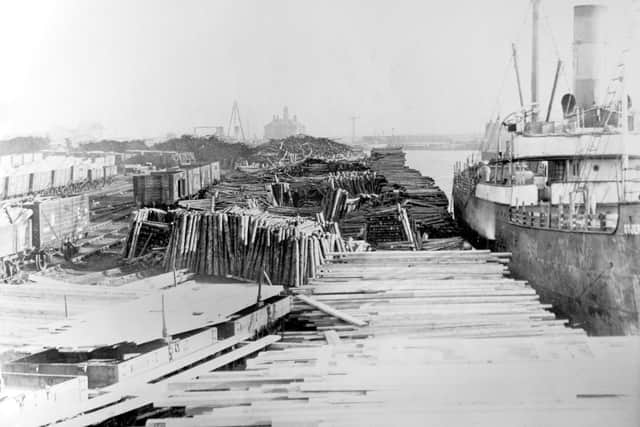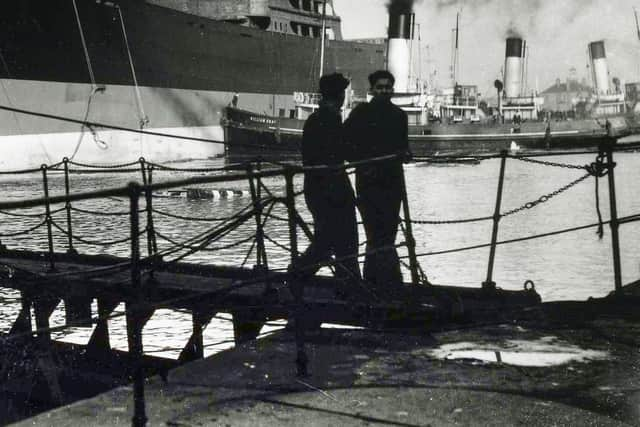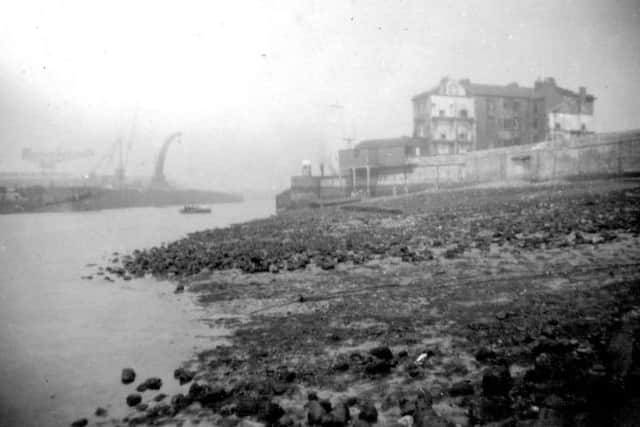The Dock Monster! When Hartlepool had its own 'strange and slimy' rival to the Loch Ness Monster
and live on Freeview channel 276
For thousands of years people all over the world have been interested in the mysterious group of animals. The Loch Ness Monster is perhaps the most talked about animal of all time.
Closer to home, the story of the Lambton Worm, on the banks of the River Wear, is still passed on from generation to generation.
Advertisement
Hide AdAdvertisement
Hide AdMuch less well known than Nessie – in fact, probably not mentioned anywhere since its discovery over 140 years ago – is the strange slimy beast discovered by Hartlepool dock workers in October 1879.


Researcher Graeme Harper reports.
The Northern Daily Mail of Saturday, October 4, 1879, reported: ‘A curious and extraordinary marine creature was caught in the Jackson Dock, West Hartlepool at seven ‘o clock this morning.
"This singular creature has the head of a cobra and is in every respect like those huge serpents to be seen in myrological collections and like that strange sea monster which captains ever and anon report that they have met with at sea.”
The animal was taken to the Mail’s office for further inspection.


Advertisement
Hide AdAdvertisement
Hide AdThe subsequent article entitled “Capture of a Sea Serpent at West Hartlepool” described it as being “10 and a half feet in length, with a dark brown slimy body".
It was coiled up in circles which might have been covered by a man’s hand.
The article continued: “The head which is somewhat elongated and flattened is of a lighter colour than the rest of the body and occasionally the serpent rears its head an inch or two from amid the coils formed by its body. ...this singular marine creature is of considerable value as a specimen of animal life hitherto unknown in the Hartlepools.”
After examination “the curious denizen of the sea” was given over to a Mr Bland, the local superintendent of the North East Railway Company for safekeeping. Quite what Mr Bland thought about it is not recorded.


Advertisement
Hide AdAdvertisement
Hide AdFor such an important discovery, it is odd that the only further reference appeared in the Mail the following Monday when a small paragraph jokingly announced the creature’s death.
“The Hartlepool sea serpent has received its quietus. The disrespectable reptile actually died while under the influence of liquor – we mean spirits of wine.”
Whatever it was, it certainly was not a reptile, unless we are to believe the unlikely scenario that it was a huge sea-faring snake.
As for being "disrespectable” did it bite Mr Bland on its way to wherever he decided to keep it?


Advertisement
Hide AdAdvertisement
Hide AdThe article suggests that it ended up either being preserved in alcohol. Or eaten.
It is a shame that the animal was not taken more seriously. It leaves us with an unanswered question: what was it?
First thoughts might be that it was a monster-sized eel but there are problems with this theory.
Eels were a common catch at the time and local fisherman would have been familiar with their characteristics.
Advertisement
Hide AdAdvertisement
Hide AdIn addition, the largest congers are around 5 feet long, meaning that they would be half the length of the Dock Monster.
Moray eels can be much bigger in length but are an exceptionally rare visitor to the UK and the cold sea around of Hartlepool in October would not be likely to tempt one over.


However, stories of a gigantic eel lurking around the docks persisted until at least the late 70s and may still be told today.
Another candidate is the Oarfish, a peculiar and elusive deep-water fish that swims vertically and is usually only seen on the surface when it’s ill or dying.
Advertisement
Hide AdAdvertisement
Hide AdThese can reach a length of 26 feet and are thought to be the culprits behind many sea serpent sightings.
They have occasionally been spotted in British waters and there is a confirmed record of one being caught in Skinningrove in Feb 2003.
In July 1950, a JB Hindmarch, of Loftus, wrote to the Mail to say: “When I was young my grandfather told me numerous stories about the Hartlepool sea serpent. I remember it was supposed to live in Hartlepool Bay and its lair was hidden in the Longscarr Rocks, near Seaton Carew.
"Nowadays nothing is heard of the serpent. Perhaps it is dead or the large crowds now to be found on Seaton sands have frightened it away to a quieter and more secluded spot.’
Advertisement
Hide AdAdvertisement
Hide AdAn earlier sea serpent record occurred in Cullercoats in 1849 when a large mystery creature was captured by fisherman and brought ashore after a prolonged struggle.
According to The Zoologist magazine of April that year, it was “visited by the gentry and scientific men of Newcastle and all declared that nothing hitherto discovered in natural history affords any resemblance to this”.
The animal – presumably now dead - was briefly put on public display in Grey Street in Newcastle but after that the trail goes cold.
In July 1945 there is a further sighting by the crew of The Black Eagle ship who were working on the wreckage of the Eugenia Chandris at the Trow Rocks, in South Shields.
Advertisement
Hide AdAdvertisement
Hide AdThe creature’s head was seen six feet above the waves and its back was said to be eight feet across.
The vast majority of sea serpent reports are fleeting glimpses before the animal disappears below the waves.
But both the Cullercoats and Hartlepool animals were landed and seen by multiple observers. It remains frustrating that all these years later we are still none the wiser as to what they were.